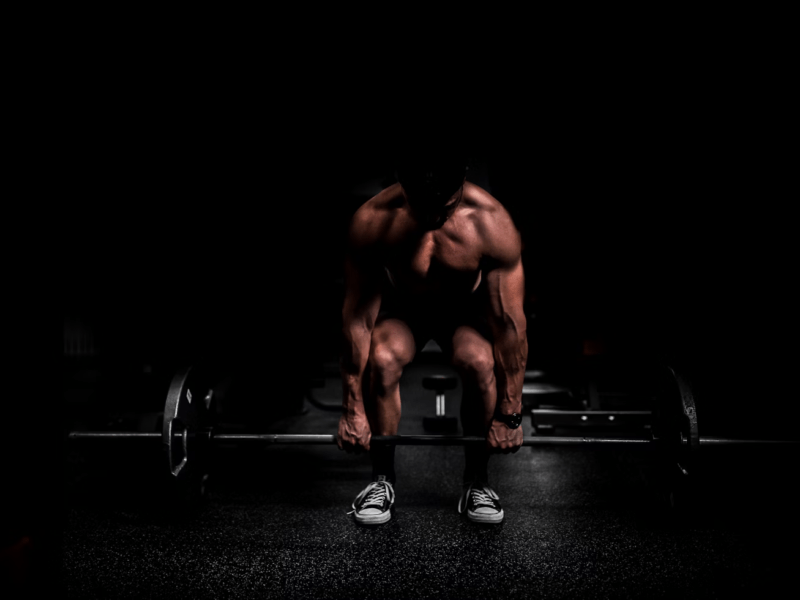At the gym, sweating often makes people feel like they’re burning fat. However, sweating itself doesn’t equate to fat loss. Sweat is mainly water, released to cool the body down, and is not an indicator of calorie or fat burning.
The misconception that sweat equals fat loss is common but inaccurate. Fat loss occurs through creating a calorie deficit, achieved by consuming fewer calories than burned through exercise and daily activities. The intensity and duration of physical activity determine calorie burn, not the amount of sweat produced.
So, can sweat be related to fat loss? Is it responsible for you losing weight? Or is all the sweat just a waste?
What is sweat?
Let’s start with the basics. Sweat, also known as perspiration, is a salty liquid produced by sweat glands in our skin. It’s not just an inconvenient side effect of exercise or hot weather; it’s actually an important bodily function.
Sweat is composed mainly of water but also contains electrolytes such as sodium, potassium, and chloride. These electrolytes help regulate fluid balance and muscle function.
Sweat glands come in two varieties: eccrine and apocrine. Eccrine glands are found all over the body and are responsible for regulating body temperature. When your body heats up, these glands release sweat, which evaporates from the skin, cooling you down.
Apocrine glands, on the other hand, are found in areas with more hair, like the armpits and groin, and are responsible for body odor. They produce a thicker sweat that, when broken down by bacteria, can lead to that lovely post-workout aroma.
Benefits of sweating
Sweating might seem like an inconvenient side effect of working out or enduring a hot day, but it offers several surprising benefits:
Temperature Regulation: The primary function of sweating is to cool the body down. When your internal temperature rises, sweating helps prevent overheating, which can be crucial during intense physical activities.
Detoxification: While the liver and kidneys handle most detoxification processes, sweating can help eliminate small amounts of toxins and heavy metals from the body. It’s not a major detox pathway, but every little bit helps! You can also drink the vitamin D and turmeric drink for improved detoxification.
Skin Health: Sweating can open up pores and flush out impurities, potentially reducing the risk of acne and other skin issues. It’s like giving your skin a mini sauna session.
Mood Improvement: Believe it or not, sweating can actually boost your mood. Physical activity triggers the release of endorphins, the “feel-good” hormones, and sweating can amplify this effect, leaving you with that post-exercise glow and a happier outlook.
Cardiovascular Health: Regular activities that make you sweat, like exercise, can improve cardiovascular health by strengthening the heart, improving circulation, and lowering blood pressure.
How many calories does sweating burn?
Now, the burning question: does sweating itself burn calories? The short answer is no. Sweating is not a direct indicator of calorie burn. Sweating during exercise is a natural process, but it’s often misunderstood as a sign of calorie burning. In reality, sweat’s primary function is to regulate body temperature.
The sweat glands release water and electrolytes to cool the body through evaporation. This process is influenced by factors like ambient temperature, humidity, clothing, and individual differences, not directly by the amount of fat burned.
To understand the connection between exercise and calorie burn, it’s crucial to focus on the intensity and duration of physical activity. For example, a person weighing 155 pounds can burn approximately 298 calories in 30 minutes of jogging at a moderate pace (5 mph). In contrast, the same individual could burn around 372 calories during a vigorous 30-minute session of high-intensity interval training (HIIT).These activities may produce varying levels of sweat, but the key factor in calorie burning is the energy expended, not the sweat produced.
The myth that more sweat equals more fat loss likely stems from the immediate weight loss observed after intense sweating. This weight loss is primarily due to water loss, not fat. The body may shed a few pounds of water during a vigorous workout, but this weight is quickly regained once rehydration happens.
True fat loss requires a sustained calorie deficit, where the body burns more calories than it consumes over time.
Relationship between sweat & fat?
Whenever we talk about sweat and weight loss, the relationship between sweat and fat is a common topic of discussion, often leading to some confusion.
Let’s clear the air (and your armpits) on this one.
When you exercise, your body uses energy. This energy comes from carbohydrates, fats, and, to a lesser extent, proteins. The goal for many people is to burn fat, and while sweating can be a sign of a good workout, it’s not directly related to fat loss.
Fat is stored in your body as triglycerides. When your body needs energy, it breaks down these triglycerides into fatty acids and glycerol, which are then used as fuel. This process, known as lipolysis, does not produce sweat.
Instead, it’s the breakdown of fat that can lead to energy expenditure, which, in turn, can help you lose weight.
Can sweating burn fat?
Sweating is the body’s way of cooling itself, not a measure of calorie burning. The amount of sweat produced varies widely among individuals and can be influenced by factors like fitness level and acclimatization to heat. For instance, trained athletes tend to sweat more efficiently because their bodies have adapted to manage heat better. This increased sweating does not correlate with a higher rate of fat loss but rather an enhanced ability to maintain optimal body temperature during intense exercise.
It’s important to distinguish between the mechanisms of fat loss and water loss. Fat loss involves the breakdown of triglycerides into fatty acids and glycerol, a process called lipolysis, which is then utilized for energy. This biochemical process doesn’t produce sweat. In contrast, sweating is simply the loss of water and electrolytes and doesn’t indicate that fat is being burned.
The type of exercise plays a significant role in fat metabolism. For instance, endurance exercises like long-distance running or deadlifting can shift the body towards burning a higher percentage of fat as a fuel source compared to high-intensity, short-duration exercises. However,this doesn’t necessarily mean more sweat equals more fat burned; the body’s efficiency at oxidizing fat varies depending on the type and duration of activity.
It’s also important to note that while some people may experience a temporary drop in weight from sweating, this is due to water loss and not a reduction in body fat. This can be particularly misleading in environments like saunas or hot yoga classes, where the high temperatures cause excessive sweating but don’t significantly contribute to fat loss.
So, while sweating can be a sign of a strenuous workout, it should not be used as a measure of fat loss.
Are there any drawbacks to sweating?
While sweating is a natural and healthy bodily function, excessive sweating can have some drawbacks:
Dehydration: The most significant risk of excessive sweating is dehydration. When you sweat, you lose water and electrolytes. If you don’t replenish these, you could experience symptoms like dizziness, fatigue, and even heatstroke in severe cases.
Electrolyte Imbalance: Along with water, sweating can deplete electrolytes. These minerals are crucial for muscle function, and an imbalance can lead to cramps, weakness, and other issues.
Skin Irritation: Excessive sweating can lead to skin irritation, rashes, and acne. It can also exacerbate conditions like eczema or psoriasis.
Social Discomfort: Let’s face it; no one enjoys being a sweaty mess in social situations. It can lead to self-consciousness and discomfort, especially if you suffer from hyperhidrosis (excessive sweating).
Clothing Damage: Sweat can stain and damage clothing over time. It can also lead to unpleasant odors, which might require more intensive laundering.
How can you burn fat?
So, if sweating isn’t the key to fat loss, what is? Here’s a quick guide to effective fat-burning strategies:
Balanced Diet: The cornerstone of fat loss is a balanced diet. Focus on whole foods, lean proteins, healthy fats, and complex carbohydrates. Keep an eye on portion sizes and try to create a calorie deficit.
Regular Exercise: Incorporate both cardio and strength training into your routine. Cardio exercises like running, cycling, or swimming increase your heart rate and burn calories, while strength training builds muscle, which can increase your resting metabolic rate.
High-Intensity Interval Training (HIIT): HIIT workouts alternate between short bursts of intense activity and rest or low-intensity periods. This type of exercise can be highly effective for burning calories and fat.
Get Enough Sleep: Quality sleep is essential for weight management. Lack of sleep can lead to hormonal imbalances increased appetite, and a slower metabolism.
Manage Stress: Chronic stress can lead to weight gain, especially around the abdominal area. Practice stress-reduction techniques like meditation, deep breathing, or yoga.
Wrapping Up
The truth about sweat and fat loss is out in the open, and it’s as clear as a bead of sweat on a hot day. While sweating can be a sign of a good workout, it’s not a direct indicator of fat loss. The real magic lies in creating a calorie deficit through a combination of a balanced diet and regular exercise.
Sweat may make you feel like you’ve worked hard, and it does play a role in cooling your body down, but it’s not the secret sauce for burning fat. So, the next time you’re dripping in sweat at the gym, remember that it’s the effort and consistency in your routine that truly count.





